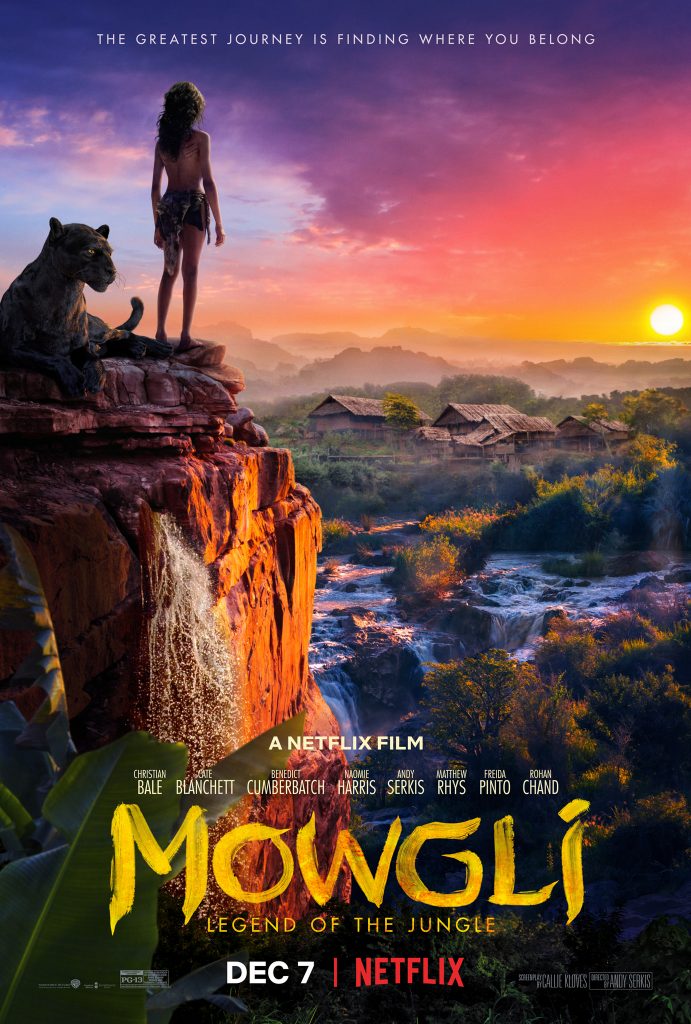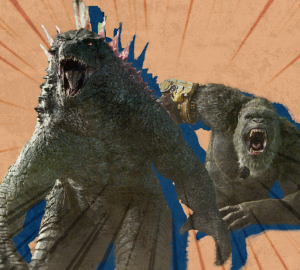Can ‘Mowgli: Legend of the Jungle’ swing high against other adaptations?

This December, Netflix released “Mowgli: Legend of the Jungle,” the newest film adaptation of Rudyard Kipling’s 1894 collection of stories “The Jungle Book.” The now familiar tale tells the story of, as the title would suggest, Mowgli, an orphan human child raised by wolves in the Indian jungle following the murder of his parents by the ferocious tiger Shere Khan. Growing up, Mowgli must make the choice whether to remain in the pack or accept his fate with humanity — all while trying to steer clear of the vengeful Shere Khan who is determined to finish the job he started.
So let’s address the elephant in the room. The question on everyone’s mind upon hearing about this film is its’ relation with Disney’s 2016 “The Jungle Book,” another CGI heavy adaptation of Kipling’s work with an A-list cast. However, this is where the similarities end. While Disney’s film attempts to adapt the classic tale, it simultaneously relies on the light-hearted 1967 animated film to win over audiences. “Mowgli,” however, is a far different beast that will throw everything we know about cinematic versions of this story out the window.
“Mowgli” is the proud passion project of motion capture powerhouse Andy Serkis in his directorial debut — in which he puts effort into telling Mowgli’s story first and foremost. The first half of the film is where this is most effective. Serkis takes the time for us to absorb the fascinating culture these animals have crafted and the relationships they have with one another. It is solid world building, and allows for plenty of the film’s rich atmosphere.
The characters feel far more fleshed out than in other adaptations, even if they’re not as instantly classic. Rohan Chand gives a compelling performance of the titular character, which is easily the best cinematic version of the character yet. We feel the effort he puts into trying to fit in, and believe in his cumulating frustrations as the film goes on — both with the human and animal world. Due to this, his actions feel to have quite a bit of weight to the world around him, helping to craft the film into a classic hero’s journey. Let’s just say that by the end, the “Legend of the Jungle” portion of the title feels justified.
The animal characters are also pulled off very well. Christian Bale’s Bagheera is more or less the same as we’ve seen him before, but with a more warm brotherly edge while Andy Serkis’ Baloo gives us a far more intimidating drill sergeant type character than we are used to seeing — but still has a level of heart that justifies his actions. Benedict Cumberbatch as Shere Khan gives a truly menacing performance that brings the character to new levels of unflinching energy.
Visually, the movie is a mixed bag. The environments feel immersive and look stunning, with the lush jungle radiating off the screen, as well as the village and monkey temple having their own sense of distinction. However, the designs of the animals may take some getting used to. Serkis intends to infuse a sense of stylization within the realistic anatomy of the animals that looks odd at first for some, particularly Baloo, Shere Khan, Kaa and the wolves. However, it grows on you over time thanks to the phenomenal animation and performances. Some of them look downright beautiful, with special note going to Hathi the elephant, who looks to be an ancient part of his environment.
There are some uneven elements that do hold the film back rather significantly. The editing here is a mess. The film cuts rather awkwardly after certain scenes and loses a good amount of the atmosphere in the process. There is a sense that the studio didn’t want the film to go too dark at times and the choppy editing is most evident at such moments.
This may also be the reason as to why some narrative elements feel ill-balanced by the end. While the first half of the film does a solid job at allowing the audience to connect with Mowgli and his relationship with the jungle, the latter half of the film tries to cram in his time at the village alongside a somewhat clunky climax with some weaker results.
It’s not that his time in the village is done badly per say, rather the opposite. It is interesting to see the people Mowgli interacts with and how those relationships develop, but a good chunk of them have very little resolution and are not focused on for very long. It makes these parts feel more like moments to check off of a checklist rather than fully atmospheric, compelling scenes.
“Mowgli: Legend of the Jungle” is a mix of good and rushed elements, but it is certainly worth seeing. By the end, despite its faults, the film still succeeds at telling a truly enthralling journey that keeps you interested and involves you in its lead’s dilemmas, creating what may be the best Mowgli story out there on the screen — even if it isn’t necessarily the best “Jungle Book” movie for some. Swing on over and see for yourself on Netflix.
Review overview
Summary
7.7"Mowgli: Legend of the Jungle" may have been uneven in some places, but still delivers a largely compelling, visually stunning tale that is a clear work of love.


























